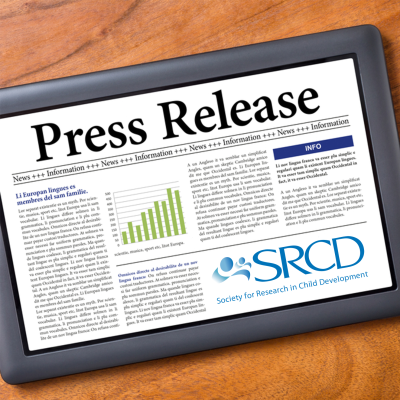Many North American Indigenous Youth Experience Symptoms of Depression During Adolescence
PRESS RELEASE / CHILD DEVELOPMENT: Embargoed for Release on July 31, 2019
Studies of youth and their experiences with depression have tended not to include Indigenous youth. A new study that analyzed data on the development of depressive symptoms among Indigenous youth in the United States and Canada found that many of the youth had experienced these symptoms during adolescence. The study also identified the risks associated with developing symptoms of depression and how depressive symptoms were associated with alcohol use disorder.
The analyses were conducted by researchers at the University of Missouri and are published in Child Development, a journal of the Society for Research in Child Development.
“Our findings provide insight into the unique developmental patterns of symptoms of depression for Indigenous youth,” notes Miriam M. Martinez, assistant research professor of human development and family science at the University of Missouri, who conducted the analyses.
“Since Indigenous youth may be at greater risk for psychological problems like depression due to their disproportionate exposure to stressful experiences, such as poverty, substance use and abuse, physical illness, and trauma from maltreatment, our findings can help clinicians and other mental health practitioners, including counselors and social workers, identify at-risk adolescents for targeted prevention and intervention.”
Researchers interviewed 674 North American Indigenous adolescents annually from 2002 to 2009, starting when they were 11 to 12 years old and continuing until they were 17 to 18 years old. The youth were part of a longitudinal study by researchers at the University of Nebraska-Lincoln that examined culture-specific risk and resilience factors among Indigenous adolescents. That study was designed in partnership with three U.S. American Indian reservations and four Canadian First National reserves. Participants were youth who were part of Indigenous groups that were the original settlers of their regions, including Native Americans and Canadian First Nations. About half the participants reported a gross annual household income below $25,000. Symptoms of depression were measured with a standardized diagnostic test that was adapted for cultural appropriateness. The study took into account the youth’s gender, early puberty-related development, perceived experiences with discrimination, and a history of major depression in the youth’s caregivers. The researchers also assessed the youth’s use of alcohol.
The study found that the following Indigenous youth were at greater risk of experiencing high levels of depressive symptoms:
- Girls and youth who perceived that they had experienced discrimination in early adolescence,
- Teens who had early puberty-related development, and
- Adolescents who had a primary caretaker with a history of major depression.
Youth who experienced sustained high levels of symptoms of depression had the greatest risk of developing an alcohol-use disorder during adolescence; almost 33% of the study’s participants met the diagnostic criteria for this disorder by the time they were 17 and 18 years old.
Researchers also identified four developmental patterns of depressive symptoms in the participants:
- Almost 37% of the youth had relatively low levels of depressive symptoms that decreased slightly over time,
- 7.6% of the youth had low initial levels of depressive symptoms that increased sharply after ages 13 and 14,
- 34% of the youth had high initial levels of symptoms of depression that increased slightly between ages 11 and 12 and ages 13 and 14, but decreased steadily after that, and
- 21% of the youth had high levels of symptoms of depression that were relatively stable across time.
The authors of the study caution that because they looked at youth from a single cultural group and because Indigenous populations differ, it is not possible to generalize their findings to Indigenous youth from other cultural groups.
“Our findings show that youth who felt they had been discriminated against when they were 12 were more likely to experience high levels of depression in early and later adolescence,” explains Brian E. Armenta, assistant research professor of psychological sciences at the University of Missouri, who coauthored the study. “They also suggest that the mental health of Indigenous youth may be improved by addressing the ways they understand and respond to such discrimination.”
“When parents or other caregivers, teachers, and mental health professionals teach ethnicminority adolescents directly and indirectly to take pride in their heritage and how to cope with discrimination, it can reduce the negative consequences of these experiences.” Armenta adds. “These lessons can also be integrated into existing prevention and intervention programs aimed at improving the well-being of Indigenous youth.”
The study was supported by the National Institute on Drug Abuse, the National Institute of Mental Health, and the National Institute on Alcohol Abuse and Alcoholism.
###
Summarized from Child Development, Trajectories of Depressive Symptoms Among North American Indigenous Adolescents: Considering Predictors and Outcomes by Martinez, MM, and Armenta, BE (University of Missouri). Copyright 2019 The Society for Research in Child Development, Inc. All rights reserved.
Contact Information:
Jessica Efstathiou
Society for Research in Child Development
202-800-3255
jefstathiou@srcd.org


